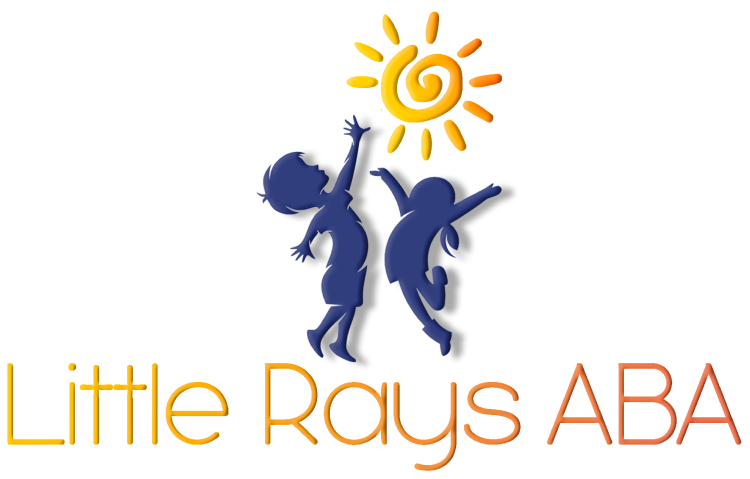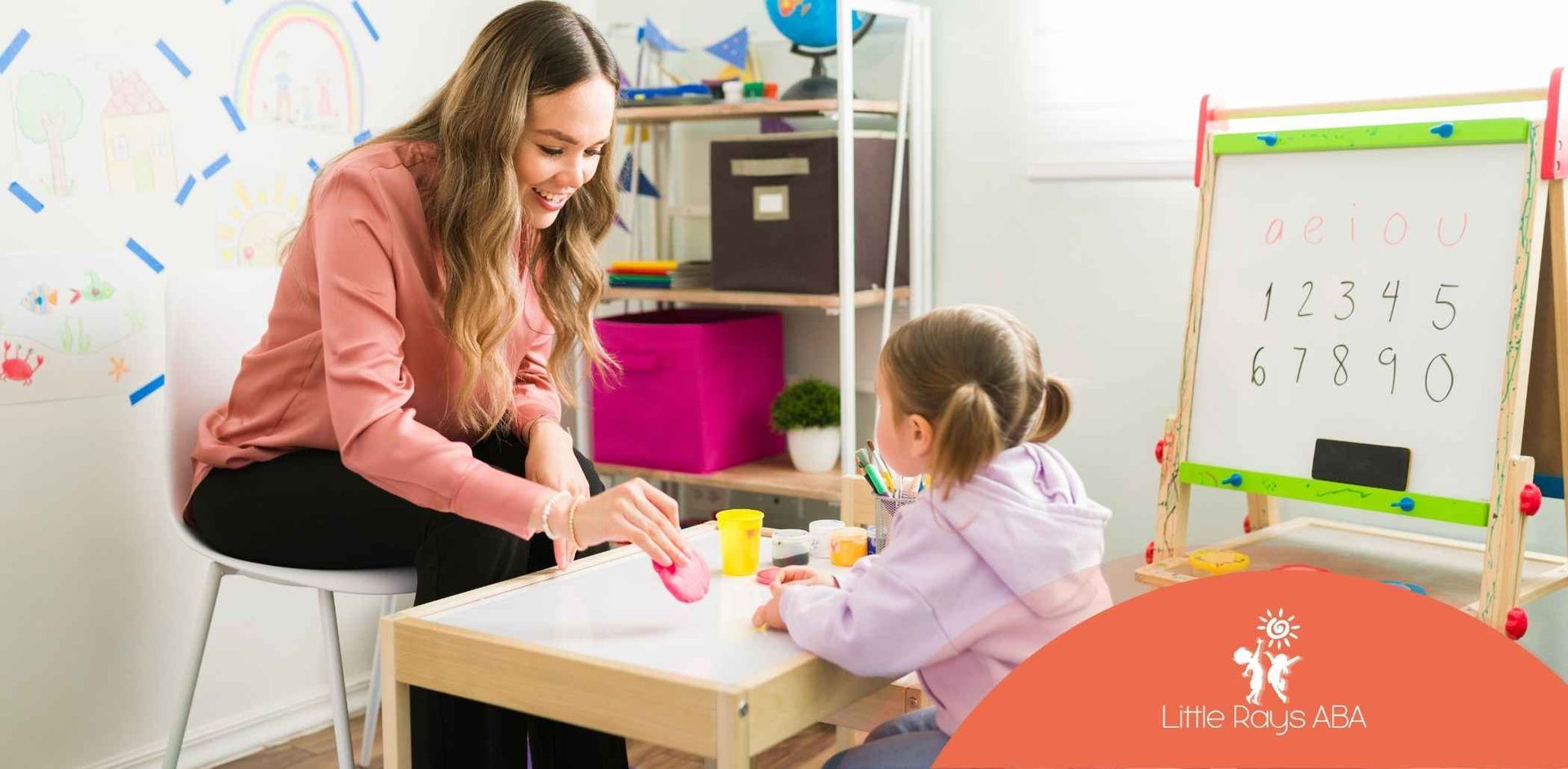
What Is the Difference Between Labeling and Tacting in ABA?
Labeling and tacting may sound like jargon, but they are essential building blocks of language in ABA therapy. One teaches vocabulary, the other creates connection.
A client I supported in in-home ABA therapy loved building with Legos. He could label colors and shapes perfectly. But when he began tacting — “The tower is tall!” — it changed the way he interacted with his family. His parents were thrilled to finally hear him share his thoughts.
Let’s break down these two concepts and explore their differences.
Understanding Verbal Operants in ABA
Before diving in, it helps to know that ABA therapists use something called verbal operants. These are categories of language based on the function of words, not just their form. Developed by psychologist B.F. Skinner, verbal operants include:
- Mand: Asking for something (“I want juice”)
- Tact: Labeling or commenting on the environment (“That’s a dog”)
- Echoic: Repeating what is heard (“Say ball” → “ball”)
- Intraverbal: Responding to conversation or questions (“What’s your name?” → “Alissa”)
Labeling is often used casually by parents and teachers to mean naming objects, but in ABA, tacting is the more precise term.
What Is Labeling?
In everyday language, labeling refers to identifying or naming something. It’s when a child sees an object, picture, or person and says the correct word.
Examples of Labeling
- Seeing a ball and saying, “ball”
- Pointing to a dog and saying, “dog”
- Looking at a picture of a car and saying, “car”
Labeling is the foundation of vocabulary development. It teaches children that words have meaning and are connected to the world around them.
Why Labeling Matters
- Builds vocabulary
- Supports reading readiness
- Helps children categorize and understand their environment
Labeling is often one of the first language milestones that ABA therapy works on.
What Is Tacting?
Tacting is a type of verbal operant in ABA. It’s not just naming — it’s commenting, describing, or sharing something observed in the environment, usually in response to someone else.
Examples of Tacting
- Child sees a dog barking and says, “The dog is loud”
- Hearing an airplane and saying, “That’s a plane”
- Touching snow and saying, “It’s cold”
Unlike simple labeling, tacting is socially significant. It invites communication and helps children share experiences with others.
Why Tacting Matters
- Builds descriptive language
- Encourages conversation skills
- Connects children to others socially
- Forms the basis for storytelling and academics
Tacting shows a child isn’t just naming something — they’re using language to interact.
Labeling vs. Tacting: Key Differences
Click or press Enter on any node to see a quick explanation. Lines show how each aspect branches into Labeling and Tacting.
Think of labeling as pointing out words, while tacting is about using words to connect with others.
How ABA Therapists Teach Labeling and Tacting
Teaching Labeling
- Discrimination training: Showing two pictures (dog vs. cat) and asking, “What’s this?”
- Repetition: Practicing labeling across many objects and contexts
- Reinforcement: Praising or rewarding correct answers (“Yes, that’s a car!”)
Teaching Tacting
- Natural environment teaching (NET): Encouraging tacts during play or daily routines
- Prompting and fading: Helping the child describe something, then reducing support over time
- Modeling: Adults model tacts (“That’s a big truck!”) and encourage the child to repeat
- Generalization: Practicing tacts in different environments (home, school, playground)
Why the Distinction Is Important for Autism
Children with autism may learn to label quickly — they can point to an object and say its name. But tacting often requires more work because it involves social communication, which can be more challenging.
Without tacting, children may:
- Speak words without connecting them to conversation
- Have difficulty sharing experiences
- Struggle with social reciprocity
With tacting, children can:
- Share observations and feelings
- Engage in conversations naturally
- Build friendships more easily
This is why ABA programs emphasize both labeling and tacting.
Real-Life Scenarios
- Labeling example: A child is shown a flashcard of an apple. They say, “apple.”
- Tacting example: At lunch, the child picks up an apple and says, “My apple is red.”
- Labeling example: A child sees their sibling and says, “Katie.”
- Tacting example: The child notices, “Katie is running fast!”
The jump from labeling to tacting transforms communication from pointing out facts to sharing ideas.
How Parents Can Support at Home
Encourage Labeling
- Use flashcards or picture books
- Point to objects and ask, “What is this?”
- Reinforce correct answers with praise
Encourage Tacting
- Ask open-ended questions: “What’s happening?” “What do you see?”
- Model descriptive language: “That’s a tall building!”
- Expand on their responses: Child says, “car,” parent replies, “Yes, the car is blue and fast.”
By layering both skills, parents help children not just know words, but also use them socially.
Professional Support with ABA Therapy
ABA therapists use structured teaching methods and reinforcement to help children master labeling and tacting. Over time, this builds stronger communication, independence, and social confidence.
At Little Rays ABA, we design therapy programs that meet children where they are and help them progress step by step.
Our services in Florida include:
- In-home ABA therapy
- ABA therapy in school
- ABA parent training
- In-camp ABA
By blending professional therapy with family support, children gain the tools to communicate confidently in everyday life.
FAQs
1. Why is tacting considered harder than labeling?
Tacting requires not only naming something but also describing it in a way that shares information with others. It has a social element, making it more complex.
2. Can all children with autism learn to tact?
Yes. With the right ABA strategies, many autistic children progress from labeling to tacting, improving both language and social communication.
3. How do parents know if their child is labeling or tacting?
If the child is simply naming an item, it’s labeling. If they’re describing it or sharing information with another person, it’s tacting.
Sources:
- https://pmc.ncbi.nlm.nih.gov/articles/PMC11668748/
- https://pmc.ncbi.nlm.nih.gov/articles/PMC9620673/
- https://link.springer.com/article/10.1007/s10803-024-06388-1
- https://marybarbera.com/teaching-body-parts-children-autism/
- https://onlinelibrary.wiley.com/doi/10.1002/bin.2069
Related Posts





